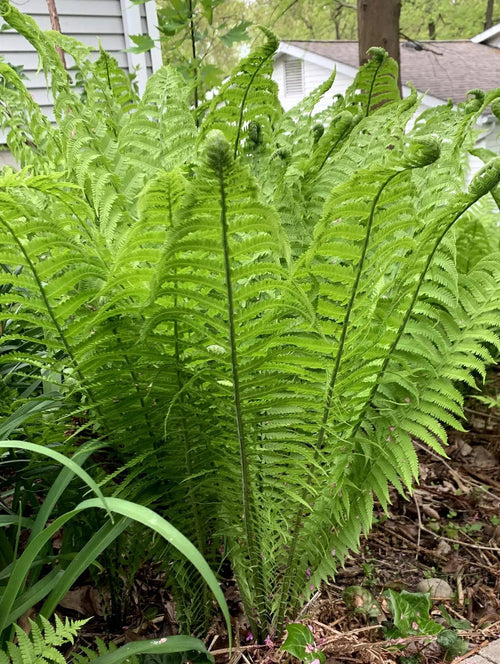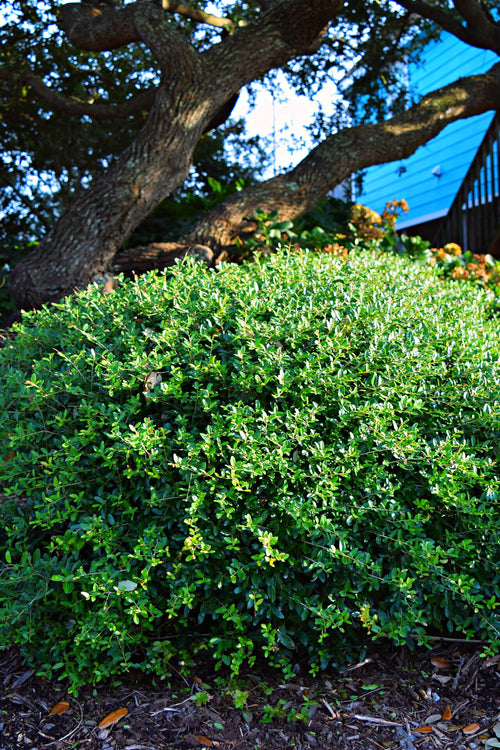Adding Texture to Your Garden with Foliage Variety: Exploring Japanese Painted Ferns, Hostas, Maximilian Sunflowers, Boxwoods, and Soft Touch Holly
In gardening and landscape design, texture is an often underestimated but powerful element that can transform a simple space into a captivating and dynamic environment. One of the most effective ways to introduce texture into your garden is by strategically incorporating different foliage types. From the delicate fronds of Japanese Painted Ferns to the robust leaves of Hostas, the towering presence of Maximilian Sunflowers, and the evergreen elegance of Boxwoods and Soft Touch Holly, these plants offer a diverse palette of textures that can elevate your outdoor space to new heights.
Textured Japanese Painted Ferns (Athyrium niponicum var. picture):
Japanese Painted Ferns are a prime example of how foliage can introduce texture with subtlety and finesse. With their finely divided fronds that boast a symphony of colors ranging from silver to burgundy, these ferns create an ethereal, almost otherworldly appearance. Their feathery texture brings a delicate touch to the shaded corners of your garden, contrasting the bolder foliage of other plants. Japanese Painted Ferns are particularly well-suited to woodland gardens or shady borders, where their unique texture adds depth without overwhelming the space.
Textured Hostas:
Hostas are renowned for their lush and expansive leaves, which come in various sizes, shapes, and colors. Their texture ranges from smooth and glossy to heavily ribbed, adding an intricate layer to your garden's visual appeal. With their immense diversity, Hostas can be used as both focal points and groundcover, depending on your chosen variety. Combining different Hosta types can create an engaging interplay of textures, bringing a rich depth to the garden. These versatile plants thrive in shaded areas, making them ideal for bringing texture to spaces with limited sunlight.
Textured Maximilian Sunflowers (Helianthus maximiliani):
Maximilian Sunflowers stand tall as an exceptional choice for a bold and dramatic injection of texture. These towering perennials can reach impressive heights and boast vibrant yellow blooms. The contrast between their sturdy, upright stems and the delicate appearance of their petals introduces a dynamic textural contrast. The large, rough leaves of Maximilian Sunflowers contribute to their overall textural impact, creating a visually striking presence in any garden. These sunflowers add texture and provide a habitat for pollinators and birds.
Textured Boxwoods:
Transitioning to evergreen options, Boxwoods are a classic choice for adding texture year-round. Known for their dense and compact foliage, Boxwoods offer gardens a refined and formal texture. The small, oval leaves are neatly arranged on the branches, creating a uniform yet intricate appearance. The surface of Boxwoods can be heightened through creative pruning techniques, allowing you to shape them into hedges, topiaries, or even unique focal points. These versatile shrubs work well in various garden styles, from traditional to contemporary, adding a sense of structure and elegance.
Textured Soft Touch Holly (Ilex crenata 'Soft Touch'):
Soft Touch Holly is another evergreen option that brings a touch of luxury to garden texture. With its small, rounded leaves and compact growth habit, this holly variety exudes elegance while maintaining a soft, approachable texture. The delicate leaves create a sense of intricacy, making them perfect for edging pathways, defining garden beds, or even framing more exuberant plants. Unlike traditional holly varieties with spiky leaves, Soft Touch Holly offers a tactile-friendly alternative that still captures the essence of evergreen beauty. Incorporating these diverse foliage options into your garden can create a captivating tapestry of textures that evolves with the changing seasons.
Whether you're aiming for a serene and subdued ambiance or a dynamic explosion of visual interest, the thoughtful combination of Japanese Painted Ferns, Hostas, Maximilian Sunflowers, Boxwoods, and Soft Touch Holly will provide an array of textural experiences that delight the senses and elevate your outdoor space to a new level of horticultural artistry.
Gardening in 2023: Embracing Organic Shapes, Textures, and Orientations
As the gardening world evolves, 2023 promises to be a year marked by a renewed appreciation for nature's organic beauty, a heightened emphasis on diverse textures, and a playful exploration of innovative orientations. Garden enthusiasts and landscape designers are embracing these trends to create outdoor spaces that evoke a sense of harmony, dynamism, and connection with the environment.
Organic Shapes:
In 2023, gardening is stepping away from rigid lines and geometric patterns in favor of embracing the beauty of organic shapes. The trend towards organic shapes acknowledges the inherent variability of nature, allowing plants and landscaping elements to flow more naturally within their surroundings. From meandering pathways that mimic the curves of a riverbed to irregularly shaped garden beds that mimic the randomness of a forest clearing, the focus is on creating spaces that feel harmonious with the environment. This trend is not limited to plant layouts. Garden structures, such as pergolas and seating areas, are designed with softer, more flowing lines echoing the natural world's contours. Sculptures and art installations also adopt organic shapes, creating a sense of unity between the garden and its surroundings. By incorporating organic shapes, gardens in 2023 are inviting a more relaxed and inviting atmosphere that resonates with the innate beauty of the outdoors.
Textures:
Texture has always been a powerful tool in gardening design, but 2023, it takes center stage. The year is marked by a deliberate exploration of textures that engage the senses and create tactile experiences. Gardeners carefully select plants with varying leaf textures, such as the juxtaposition of smooth leaves against rough bark or delicate fronds next to coarse grasses. This interplay of textures adds depth and visual interest to garden spaces, even more so when textures evolve throughout the seasons. Textures extend beyond plants, influencing hardscape choices as well. Stone pathways with intricate patterns underfoot, tactile sculptures that beg to be touched, and water features that play with the element of touch are all part of the texture-focused movement. Incorporating diverse materials, from pebbles to driftwood, enhances the overall tactile experience, encouraging visitors to interact and immerse themselves in the garden.
Orientations:
Garden orientations are undergoing a fascinating transformation in 2023, with designers embracing non-traditional layouts to create a sense of surprise and exploration. Apart from the predictable north-south alignments, gardens are designed to capture unique viewpoints and unexpected vistas. Angular layouts, diagonal pathways, and off-center focal points encourage visitors to meander and discover hidden corners, engaging them in a journey of discovery. These innovative orientations are also aligned with sustainable practices. By optimizing the garden's layout based on the sun's movement, wind patterns, and water drainage, designers are enhancing the ecological functionality of the space. In this way, gardens are becoming aesthetic retreats and ecosystems that contribute positively to their surroundings. In conclusion, gardening in 2023 is poised to celebrate nature's organic beauty, a symphony of textures, and a canvas for creative orientations. The shift towards embracing organic shapes creates gardens that harmonize with the environment while exploring textures, engaging the senses, and enhancing tactile experiences. Innovative orientations add an element of surprise and sustainable functionality. As gardeners and designers continue to adapt to these trends, outdoor spaces transform into captivating sanctuaries that blur the boundaries between the natural and designed worlds.




















































